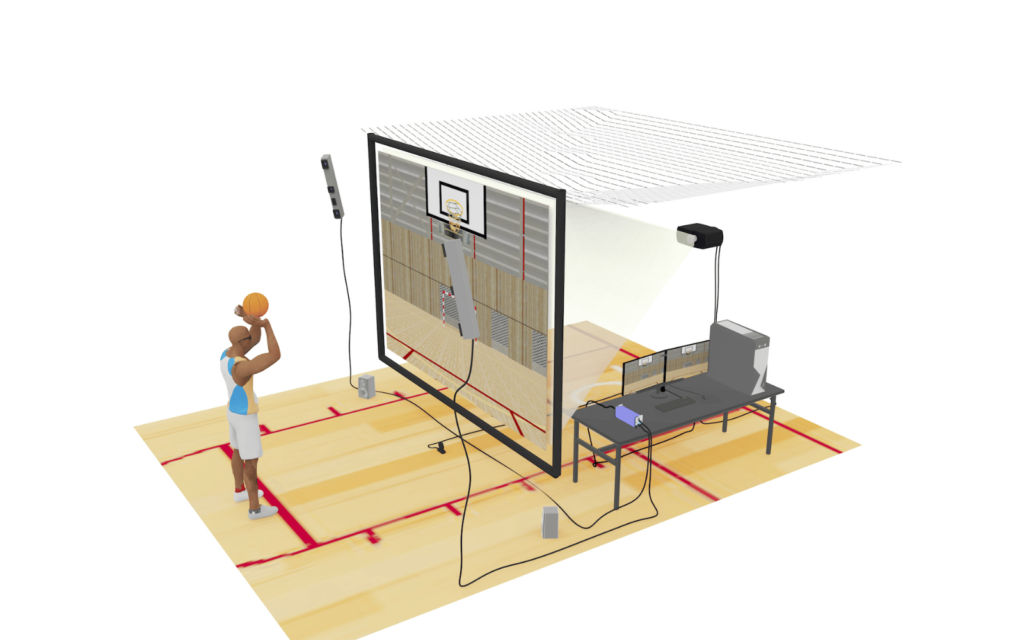Golden State Warriors point guard Steph Curry is one of the world’s leading basketball players and unquestionably the greatest shooter of all time. The video below may look like it’s on a loop, but it’s actually Curry sinking 105 three point shots in a row – that’s five minutes of the same precise and highly-skilled action, without a single miss:
5+ minutes without a miss.
Stephen. Curry. pic.twitter.com/8DV0z5gtib
— Golden State Warriors (@warriors) December 26, 2020
Curry is 6’2″. In the real world he is tall, fast and strong, but in the NBA, where players average height is about 6’6″ (198cm), he is on the small side. Many previous basketball superstars were first scouted as freakishly tall teenagers, but his game instead relies on clever movement, smooth dribbling and that famous pinpoint shooting. So how do you identify such attributes in order to spot the next Steph Curry?
Talent identification and development is one of the key challenges for many elite sports. To stay ahead of the game, coaches are switching from subjective to objective methods and using increasingly sophisticated processes, including virtual reality (VR). VR systems can detect and map athletes’ strengths and weaknesses relative to several determinants of performance, including the sorts of “perceptual-motor” skills that someone like Curry would excel at.
In my academic research, I use digital technologies like these to mimic real-world sports performance. For instance I recently used motion capture to assess offside decisions in football and I showed that people on average judge the offside moment later than the actual moment.
My latest research looks at basketball throwing. I asked 22 players with different levels of expertise, from beginner to professional, to naturally throw a basketball in a simulator developed by Antoine Morice and colleagues from the Institute of Movement Sciences at Aix-Marseille University.
We placed electronics inside the ball and markers on the players’ bodies to monitor their movements while throwing in the simulator. Players wore stereoscopic glasses and watched a virtual twin of a real basketball court on a huge screen. The virtual scene was constantly updated with the players’ point of view to make them feel they were inside the game.
Démarrage du projet Virtualthrow !#basketball #basket #VR #VirtualReality #training #marseille #sport pic.twitter.com/aKcQEqtrlf
— Antoine MORICE (@AntoineHPMORICE) May 23, 2019
Experience counts – even in simulators
Experienced players had higher success rate in the simulator than novice players, just as you would expect on the real court. Both experienced and novice players found it harder to score when the virtual distance was increased, but the more experienced players were better able to adjust their throwing motion based on visual information suggesting the basket was further away.
Male players also released the ball to the basket at a lower angle compared with female players, even after adjusting for their height.
Finally, players switched from a “free throw” style at short distances – where both feet remain on the ground as the ball is thrown – to jump-shots further from the basket, and their movement patterns differed between expert and novice players.
Probably the most important feature of sports simulators is the way they can manipulate visual information such as where the floor markings are or how far the player is from the basket. These manipulations are often difficult to replicate in the real world.
In our study, we kept the floor-marking information constant but changed how far away the basket appeared. We observed that experienced players could use this information to adjust their throw.
These adjustments were also evident within players’ movements. For example, experienced players used more free throws, which increase stability when the ball is released and therefore lead to more successful shots.
Read More: Sony’s PSVR 2 – Hands-on and first impressions
Researchers in this field talk about “fidelity”, which is the ability of VR simulators to mimic real-world sports performance. Fidelity is particularly tough to achieve when it comes to simulating fine and skilful actions such as free throws in basketball.
If the simulator is going to be used for training, coaches need it to elicit realistic behaviour from all players, and that means providing visual cues for things like the distance from the basket so that players can adjust their movements.
Manipulating things like how far away the basket appears might help identify a future star player since talent is not only about physical characteristics but the way a player can adapt to different situations.
If Curry or someone similarly talented were to throw a basketball for the first time while in the VR simulation, we might expect them to not only score well in terms of body position and so on, but also to adapt to the sorts of changing circumstances that arise constantly in competitive games.
And this is one of the key advantages of a VR simulation: we can assess how players adapt to a change in one specific condition while everything else remains the same.
STEPH. CURRY. 😱 pic.twitter.com/8owyxVMPHs
— Bleacher Report (@BleacherReport) January 20, 2023
In the clip above, Curry gains possession deep in his own half. There is no time to dribble or pass as there is just one second remaining before half time. He shoots immediately, and scores.
Yes, the best players have repeatable and almost flawless technique, as Curry demonstrated in the first clip. But they’re also able to respond to changing circumstances – in this case, a need to shoot suddenly from extreme distance – and VR can be used to identify both skills.
- is a Senior Lecturer in Games Design, Staffordshire University
- This article first appeared on The Conversation




